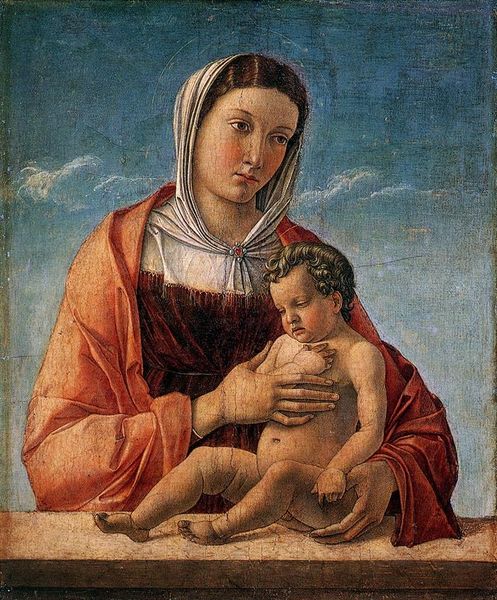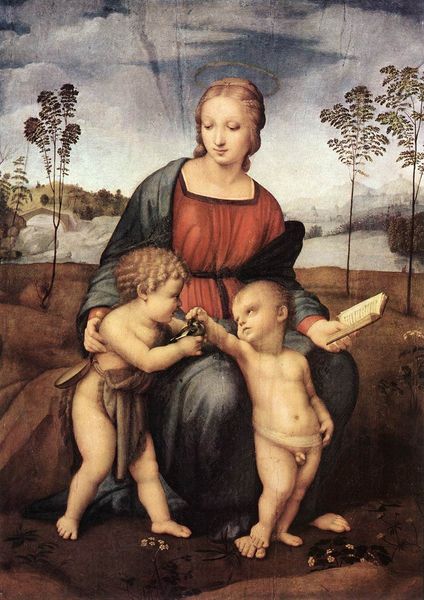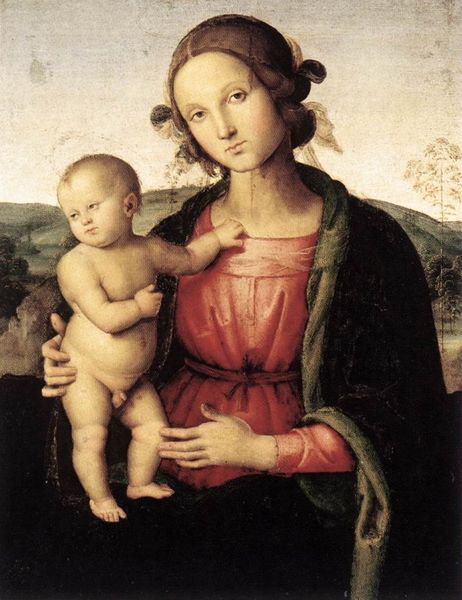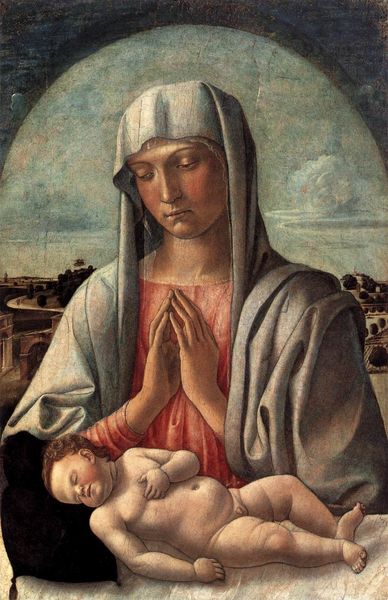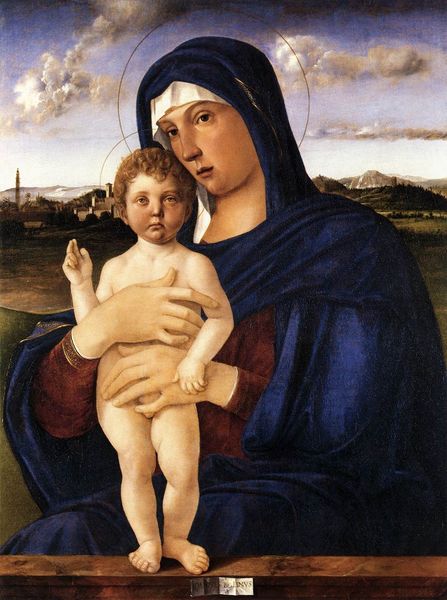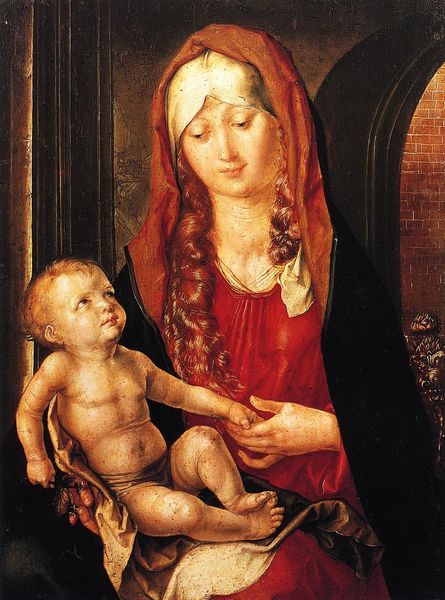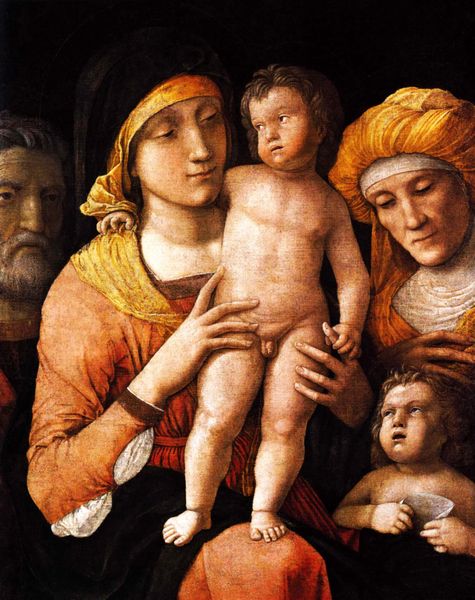
painting, oil-paint
#
portrait
#
high-renaissance
#
venetian-painting
#
painting
#
oil-paint
#
figuration
#
oil painting
#
child
#
christianity
#
history-painting
#
italian-renaissance
#
portrait art
#
christ
Dimensions: 58 x 82 cm
Copyright: Public domain
Curator: Giovanni Bellini painted this oil on wood panel, titled "The Virgin and Child with St. Peter and St. Sebastian," in 1487. It's currently held in the Louvre. What strikes you immediately? Editor: A somber, almost unsettling tone. The figures have this glazed-over look, a flatness. Even with the classic pyramidal structure, it feels very still, very staged. Curator: Precisely. Bellini, masterful as always, employs that classical composition to frame a complex theological narrative. The Virgin, of course, is central, but flanked by Saint Peter, who holds the keys to heaven, and Saint Sebastian, known for his resilience as a plague saint. Their presence invokes themes of faith and salvation. Editor: And the cherubic faces peering from the clouds above, they almost seem to mock the suffering below. The juxtaposition of idealized heavenly forms and the stoic earthly figures…it creates a tension that feels very pointed, doesn’t it? Curator: Note Bellini's skillful use of color. The warm tones of the figures' skin and robes against the cool blues of the sky. See how that tonal contrast enhances the dimensionality, guiding the viewer's gaze to the Madonna's face. Editor: But is it just about masterful technique? Consider the cultural context. Venice at that time was constantly facing potential military attacks and devastated by outbreaks of the plague. Could it be read as less as devotional image, and more like visual pleas for mercy and an attempt to make sense of constant disaster? Curator: An interesting reading. Bellini expertly weaves together form and meaning in this piece, utilizing both established iconography and compositional techniques. Editor: True, seeing the art historical context—as well as recognizing the formal elements—allows us to consider the various dimensions through which a fifteenth-century viewer might encounter a work like this one. Curator: Agreed, this intersection, and synthesis, is something to value when we discuss pieces of this era.
Comments
No comments
Be the first to comment and join the conversation on the ultimate creative platform.
